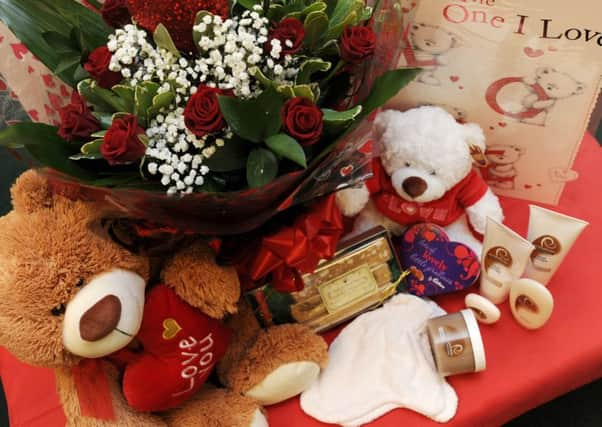My View, Mel Hewitt: Romance is for life, not just Valentine's Day


I’ve always been wary of this more commercially-focused celebration, which without any malice aforethought can make some feel isolated or simply left out.
However heartwarming or romantic this day is for some, for others the reality is an empty letterbox compounded by a chocolate- and flower-free zone, complete with a distinct lack of heart- strewn menu in a candlelit restaurant.
Advertisement
Hide AdAdvertisement
Hide AdThen again I’m sure there are people for whom the day really doesn’t register at all, except as a bit of nonsense to be avoided at all costs.
When I was an angst-ridden teenager, a kindly neighbour sent me a Valentine’s card that featured a love-struck cartoon dog and the immortal phrase ‘I’m going to hound you forever because I wuf you’. I haven’t forgotten it or the lack of real Valentine cards in those awkward adolescent days –and the ‘hounding’ bit does sound a little dodgy today!
The annual festival of romance and roses is certainly a Red Letter Day for the purveyors of cards and gifts, to the tune of billions of pounds each year spent by millions across the globe.
So how did it all begin and who was StValentine? We have to go back to Ancient Rome to find out and there the confusion begins, as there were two St Valentines.
Advertisement
Hide AdAdvertisement
Hide AdBoth have the same feast day of February 14 and both were martyred. There is also, it seems, only a tenuous connection with romance and that concerns the tale of a note handed to the daughter of one of the Valentine’s jailor’s signed: ‘Your Valentine’.
Geoffrey Chaucer is one who picks up elements of the St Valentine story in the late 14th century, when in one of his poems he tags Valentine’s day with romantic liaisons. But the subjects of his rhyme are mating ‘foules’ or birds!
The French then take up the tale in the next century with a festival of romance each year and in popular culture, including letters and poems, the phrase ‘my Valentine’ becomes more common.
Even Ophelia gets in on the act in Hamlet with references to ‘St Valentine’s Day’.
Advertisement
Hide AdAdvertisement
Hide AdPerhaps the most famous of all poems for this day is the ‘Roses are red, violets are blue …’ ditty, which has had numerous rude endings added by schoolchildren since it first appeared in the 1700s.
The Industrial Revolution and the ability to mass produce cards and people sending them by penny post, sealed with a kiss the popularity of the day.
I’m not the greatest fan of this treacle-sweet day. As Lord Byron might have put it, I shan’t be waiting with baited breath for the chocolates and flowers. Real romance is for life and can be seen and shown in all the small things and kindnesses we share with our partners all year round.